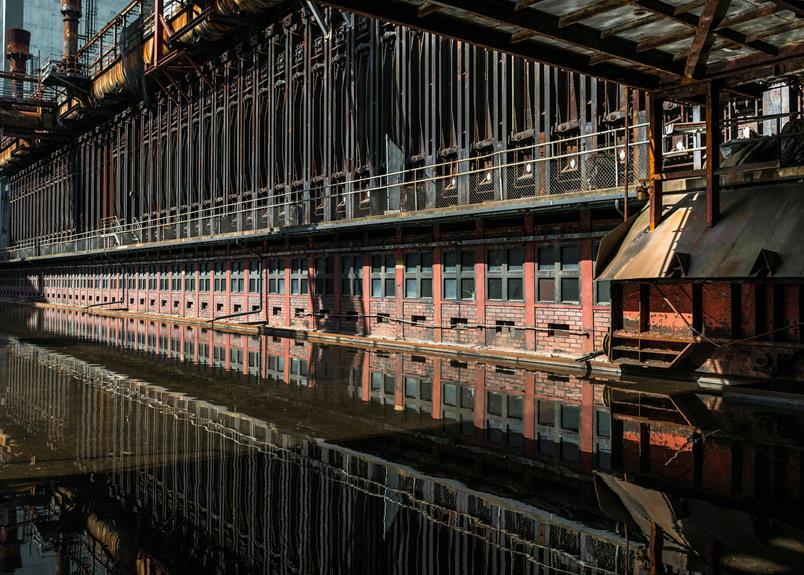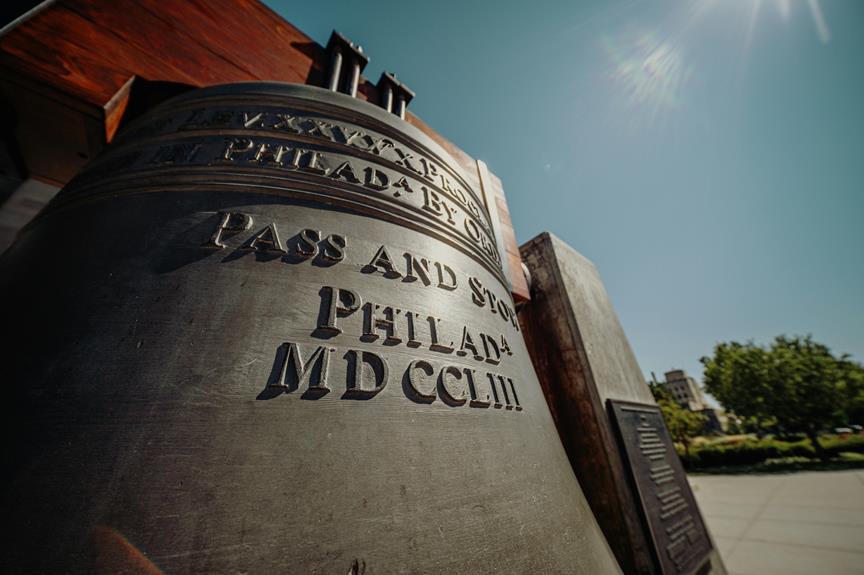The Auschwitz Museum in Poland stands as a stark reminder of one of the darkest periods in human history. The meticulously preserved grounds and artifacts within its walls offer a haunting glimpse into the horrors that unfolded during the Holocaust. However, beyond serving as a memorial, the museum also raises profound questions about the nature of humanity, responsibility, and remembrance. Its impact extends far beyond the physical structures, prompting visitors to confront uncomfortable truths and consider the implications for society today.
Key Takeaways
- Auschwitz Museum houses artifacts from the Holocaust.
- Offers guided tours with expert explanations.
- Provides educational programs on the Holocaust.
- Organizes commemorative events and memorials.
- Preserves the memory of victims through various exhibits.
History of Auschwitz
With origins dating back to the early 1940s, the history of Auschwitz encompasses the establishment and evolution of one of the most infamous concentration and extermination camps during World War II. Located in occupied Poland, Auschwitz was initially intended as a concentration camp to hold political prisoners. However, it quickly transformed into a site of haunting atrocities, where the Nazi regime implemented its systematic genocide of millions of people, primarily targeting Jewish individuals but also including others deemed undesirable by the regime.
The impact of Auschwitz on global history and collective memory is immeasurable. The sheer scale of suffering and loss experienced within its confines serves as a stark reminder of the depths of human cruelty and the importance of upholding freedom and human rights. Visiting Auschwitz today is an experience of impactful remembrance, a solemn acknowledgment of the individuals who perished within its walls and a commitment to ensuring that such atrocities are never repeated.
The history of Auschwitz stands as a grim acknowledgment to the darkest capabilities of humanity. It is a place where the horrors of the past are preserved to educate future generations about the consequences of intolerance and hate. By understanding the history of Auschwitz, we honor the memory of those who suffered and strive towards a world where freedom and dignity are upheld for all.
Camp Layout and Facilities
The arrangement of facilities and layout within Auschwitz Camp was meticulously structured to serve the operational needs of the Nazi regime during World War II. The camp consisted of three main sections: Auschwitz I, Auschwitz II-Birkenau, and Auschwitz III-Monowitz. Auschwitz I was the administrative center, housing offices, barracks, and torture chambers. It also contained the infamous 'Arbeit Macht Frei' gate, symbolizing false hope for incoming prisoners.
Auschwitz II-Birkenau, the largest sector, held gas chambers and crematoria where mass exterminations took place. The living conditions in Birkenau were deplorable, with overcrowded barracks, minimal sanitation, and inadequate food supplies. Auschwitz III-Monowitz, a labor camp, focused on supporting the nearby IG Farben factory.
The camp conditions within Auschwitz were harsh, with prisoners enduring extreme cruelty, forced labor, and systematic dehumanization. The infrastructure details of the camp included watchtowers, electrified fences, and SS guard stations to prevent escapes. The layout was designed to segregate prisoners based on categories such as age, gender, and perceived usefulness to the Nazis.
Additionally, the camp had a railway connection for efficient transportation of victims to the gas chambers. Overall, the camp layout and facilities at Auschwitz were meticulously planned to facilitate the Nazi regime's genocidal operations, leaving a haunting legacy of suffering and loss.
Prisoner Stories and Testimonies
Numerous poignant accounts from survivors of Auschwitz Museum in Poland provide harrowing insight into the atrocities endured within the confines of the camp during World War II. These survivor stories and historical accounts serve as a stark reminder of the inhumanity that took place within the walls of Auschwitz.
| Prisoner Name | Testimony Summary | Date of Liberation |
|---|---|---|
| Primo Levi | Detailed the dehumanizing conditions in the camp and the struggle for survival. | January 27, 1945 |
| Elie Wiesel | Recounted the loss of his family and the horrors witnessed during his time at Auschwitz. | January 27, 1945 |
| Eva Mozes Kor | Shared the traumatic experiences of being subjected to medical experiments by Dr. Josef Mengele. | January 27, 1945 |
Primo Levi, an Italian Jewish chemist, vividly described the brutal living conditions and the constant fight for survival in his memoir, "Survival in Auschwitz." Elie Wiesel, a Romanian-born Jewish writer, chronicled the loss of his family and the unimaginable atrocities he witnessed in his book, "Night." Eva Mozes Kor, a Romanian-born Jewish twin, bravely shared her harrowing experiences of being a subject of cruel medical experiments by the notorious Dr. Josef Mengele.
These survivor testimonies provide invaluable insights into the dark chapter of human history that was Auschwitz, ensuring that the world never forgets the horrors of the Holocaust.
Liberation and Aftermath
Following the Allied forces' arrival on January 27, 1945, the liberation of Auschwitz Museum in Poland marked the beginning of a complex period of reckoning and recovery known as the aftermath. The liberation brought an end to the unspeakable horrors endured by countless individuals within the walls of Auschwitz. As survivors emerged from the shadows of the concentration camp, they faced the monumental task of rebuilding their shattered lives and coming to terms with the atrocities they had witnessed and experienced.
The historical significance of the liberation of Auschwitz cannot be overstated. It serves as a stark reminder of the depths of human depravity and the resilience of the human spirit. The atrocities committed within the walls of Auschwitz stand as a proof of the importance of vigilance against hatred, discrimination, and intolerance in all its forms. The liberation of Auschwitz Museum represents a beacon of hope and a call to action to make sure that such atrocities are never repeated.
In the aftermath of the liberation, efforts were made to provide support and assistance to the survivors as they sought to rebuild their lives. Organizations and individuals worked tirelessly to help survivors find new homes, reunite with family members, and receive the care and support they needed to overcome their traumatic experiences. The aftermath of Auschwitz's liberation was not just a historical event but a turning point in the collective consciousness of humanity, emphasizing the need for remembrance, justice, and the preservation of freedom and human dignity.
Exhibits and Collections
Upon entering the Auschwitz Museum in Poland, visitors are greeted by a curated collection of exhibits that poignantly depict the harrowing history of the Holocaust. The museum's commitment to Holocaust education and memory preservation is evident in the carefully selected items on display.
- Personal Belongings: One of the most impactful exhibits is the display of personal belongings confiscated from prisoners upon their arrival at the camp. These items, ranging from shoes to suitcases, serve as a stark reminder of the individuals who suffered and perished in Auschwitz.
- Photographs and Documents: The museum houses a collection of photographs and documents that provide a glimpse into the daily lives of prisoners, as well as the systematic dehumanization they endured. These visual aids help visitors connect on a more personal level with the victims of the Holocaust.
- Artifacts from the Camp: Exhibits showcasing artifacts recovered from the camp, such as gas canisters and barbed wire, offer a tangible link to the atrocities committed at Auschwitz. These items not only serve as a confirmation of the horrors of the past but also as a warning for the future.
Each exhibit within the Auschwitz Museum plays a crucial role in educating visitors about the Holocaust and ensuring that the memory of the victims is preserved for generations to come.
Guided Tours and Visiting Information
Visitors to the Auschwitz Museum in Poland can enhance their experience and gain deeper insights by participating in the informative guided tours provided by knowledgeable museum staff. These tours offer a more interactive approach to exploring the historical significance of the site. By joining a guided tour, visitors have the opportunity to engage with experts who provide detailed explanations of the exhibits, share personal stories, and answer questions, enriching the visitor experience.
Tour logistics at the Auschwitz Museum are well-coordinated to guarantee a smooth and informative visit for all guests. The museum offers various tour options, including group tours and private tours, allowing visitors to choose based on their preferences. It is advisable to book tours in advance due to the high demand and limited availability, especially during peak seasons. Additionally, the museum provides detailed information on tour schedules, duration, and meeting points to help visitors plan their visit effectively.
Educational Programs and Outreach
The Auschwitz Museum in Poland provides a wide array of educational programs and outreach initiatives aimed at fostering a deeper understanding of the historical significance of the site. These initiatives are essential in ensuring that the memory of the victims and the lessons from this dark chapter of history are preserved for future generations.
- Community engagement: The museum actively engages with local communities to raise awareness and promote dialogue about the Holocaust. Through community events, discussions, and exhibitions, the museum creates a space for reflection and learning, encouraging visitors to confront the realities of the past.
- Workshops: The museum offers a variety of workshops aimed at different age groups and backgrounds. These workshops cover a range of topics, from Holocaust education to human rights, promoting critical thinking and empathy among participants. By actively involving visitors in interactive learning experiences, the museum enhances the impact of its educational programs.
- School partnerships and resources: Collaborating with schools is a key aspect of the museum's educational outreach. By providing teachers with resources, lesson plans, and training, the museum supports educators in teaching about the Holocaust in a sensitive and accurate manner. School partnerships also allow students to visit the museum, providing them with a firsthand experience that complements their classroom learning.
Commemorative Events and Memorials
Throughout the year, the Auschwitz Museum in Poland organizes a series of commemorative events and maintains various memorials on the grounds to honor the victims of the Holocaust and guarantee their stories are never forgotten. Remembrance ceremonies play an essential role in ensuring that the atrocities of the past are not repeated, and that the memory of the millions who suffered remains alive in the collective consciousness. These events serve as a poignant reminder of the horrors of the Holocaust and the importance of promoting peace and understanding among all peoples.
To further engage visitors and provide a deeper understanding of the historical significance of Auschwitz, the museum conducts educational programs that focus on Holocaust education. These programs aim to educate individuals about the events that transpired during World War II, the systemic persecution of millions of innocent people, and the importance of tolerance and acceptance in today's world.
| Commemorative Event | Description | Importance |
|---|---|---|
| Remembrance Ceremonies | Solemn events to honor the victims of the Holocaust | Ensuring the memory of the victims is preserved |
| Memorial Sites | Various memorials scattered across the grounds | Serving as physical reminders of the past |
| Educational Programs | Programs focusing on Holocaust education for visitors | Promoting understanding and preventing future atrocities |
These initiatives not only pay tribute to the victims but also serve as a call to action for future generations to uphold the values of peace, tolerance, and human rights.
Preserving the Memory
Preserving the memory of the victims of the Holocaust at the Auschwitz Museum in Poland involves a multifaceted approach that encompasses commemorative events, memorials, and educational programs. This all-encompassing strategy guarantees that the atrocities committed during this dark period of history are never forgotten and that future generations learn from the past to prevent such horrors from happening again.
- Memorial Art: The Auschwitz Museum features various forms of memorial art scattered throughout the site, including sculptures, installations, and symbolic structures. These artistic representations serve as poignant reminders of the suffering endured by millions and evoke a sense of reflection and remembrance among visitors.
- Educational Resources: The museum provides a wealth of educational resources, such as guided tours, exhibitions, and archival materials, aimed at educating visitors about the Holocaust. These resources offer insights into the personal stories of survivors, historical context, and the systemic nature of the genocide, fostering a deeper understanding of the events that transpired at Auschwitz.
- Interactive Programs: In addition to traditional educational resources, the Auschwitz Museum offers interactive programs, workshops, and lectures to engage visitors of all ages. These hands-on experiences encourage active learning, critical thinking, and empathy, ensuring that the memory of the Holocaust remains alive and impactful in contemporary society.
Frequently Asked Questions
Are Children Allowed to Visit the Auschwitz Museum?
Age restrictions may apply at certain historical sites due to the emotional impact of the content. Parental guidance is often recommended for children to navigate such exhibits effectively.
Despite the potential for emotional intensity, visits to educational sites like museums can offer valuable learning experiences. Understanding the sensitive nature of the content allows for proper preparation and guidance to guarantee that children can appreciate the educational value while being mindful of the emotional impact.
Are There Any Restrictions on Photography Inside the Museum?
Photography restrictions within museums are common practice to preserve artifacts and respect the cultural significance of the exhibits. Museum rules often prohibit flash photography, tripods, or any form of disruptive behavior that may disturb other visitors or damage the items on display.
These restrictions aim to uphold the integrity of the museum's collections and maintain a respectful environment for all patrons to enjoy and learn from the exhibits.
How Can I Support the Preservation Efforts of the Museum?
Supporting preservation efforts of museums is essential for maintaining cultural heritage. One way to contribute is through donations, which provide financial resources for upkeep and conservation.
Another way is to volunteer time and skills, assisting with various tasks. Both avenues allow individuals to actively engage in safeguarding historical sites for future generations.
Is There a Recommended Dress Code for Visitors?
When visiting significant historical sites worldwide, being mindful of cultural norms enhances the experience. Understanding the expected dress code is essential for visitors to show cultural sensitivity and respect.
Travel tips often suggest wearing modest clothing, comfortable shoes, and adhering to any specific guidelines provided by the site. By following these recommendations, visitors can fully immerse themselves in the experience and show appreciation for the site's historical and cultural significance.
Can Visitors Leave Personal Tributes at the Memorial Site?
Visitors often seek to pay their respects and honor the memory of those lost by leaving personal reflections or tributes at memorial sites.
It is essential to observe proper memorial etiquette when doing so, ensuring that any items left are respectful and appropriate.
Personal tributes can serve as a way for visitors to connect with the site on a deeper level, fostering a sense of remembrance and reflection for both the individual and the collective.
Conclusion
To summarize, the Auschwitz Museum in Poland stands as a stark reminder of the horrors of the Holocaust, serving as a poignant symbol of remembrance and education. Through its exhibits, tours, and programs, the museum brings to light the atrocities of the past in order to promote understanding, tolerance, and human rights.
As visitors walk through the solemn grounds, they are confronted with the harsh reality of history, urging them to never forget the lessons learned from this dark chapter in humanity.


